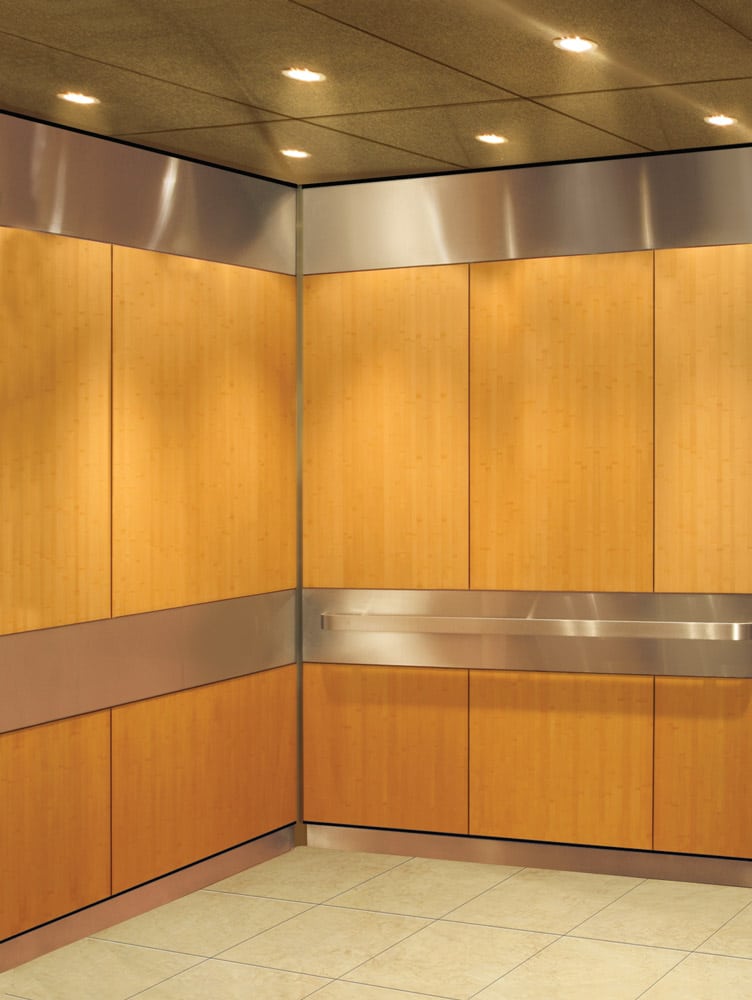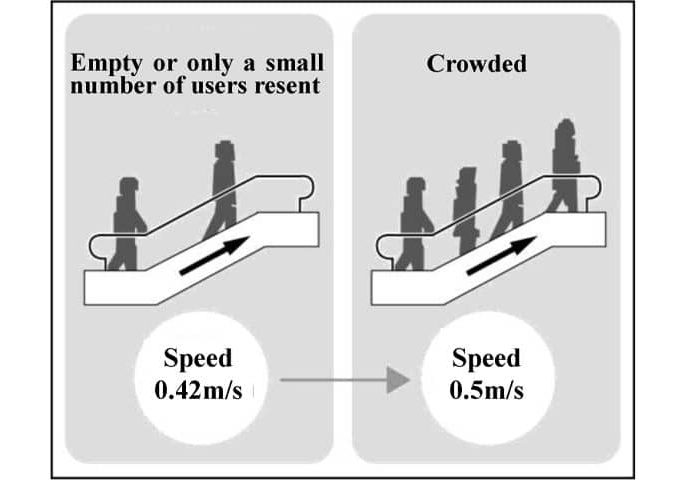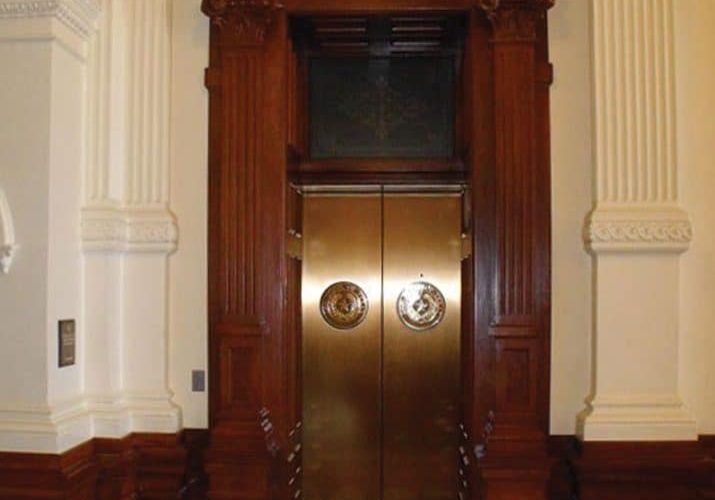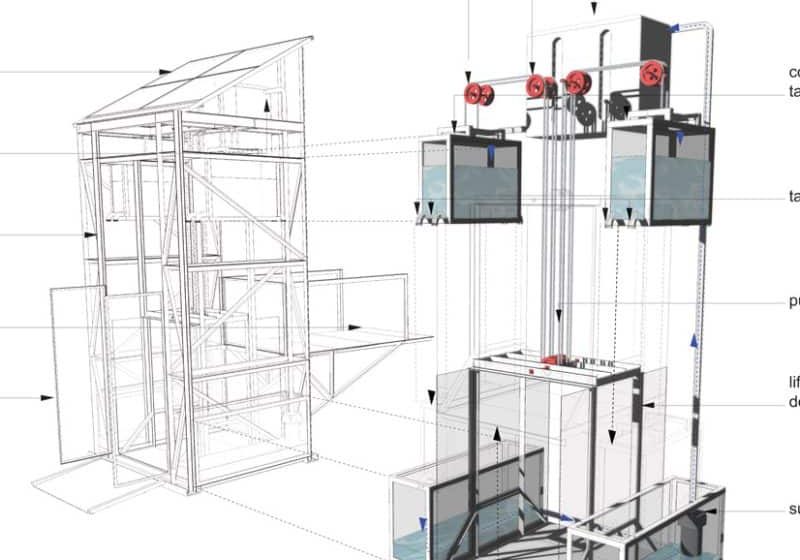Keen speaks with Cara Furgiule, a LEED accredited architect, about the LEED program and its impact on the elevator industry.
by Gary Keen
Leadership in Energy and Environmental Design® (LEED) is an internationally recognized certification system that provides guidelines and verification that a building was designed and built using strategies and materials that save energy, use water efficiently, reduce CO2 emissions and improve indoor air quality.
Cara Furgiuele (CF) is a LEED-accredited registered architect who is licensed in New Jersey and Pennsylvania and has been involved with sustainable design for the past 15 years. She received her LEED accreditation in 2008 and is currently on staff at SnapCab by Bostock, an elevator cab interior manufacturer in Warrington, Pennsylvania. Your author (GK) spoke with Furgiuele about the LEED program and its impact on the elevator industry.
GK: How does the LEED system work?
CF: LEED guidelines, developed by the U.S. Green Building Council, provide architects, engineers and builders with a concise framework for measuring the efficiency of building design and operation. The guidelines use a system of credits, with the level of LEED certification based on the number of credits accumulated.
GK: What does a LEED-accredited architect do, exactly?
CF: LEED-accredited professionals evaluate projects from schematic design through commissioning, authoring and managing the documentation required for certification. However, even without the process of LEED certification, LEED requirements can be used to make buildings better for their occupants and more efficient for [their] owners.
GK: Why was LEED developed?
CF: Buildings have a huge impact on our country’s use of energy, because they use 60% of the electricity in this country. Until recently, construction and renovation waste was a third of the material going into landfills. There’s so much a company can do to conserve resources.
GK: Who originated the LEED system?
CF: The LEED program was originally staffed solely by volunteers, who served out of a commitment
to sustainable design. Their interest was purely aimed at producing more efficient buildings. They also wanted to reduce the impact of construction and growth on the environment.
GK: More specifically, how does the LEED system impact the elevator industry?
CF: LEED certification is often required for state and federally funded projects. Schools and other institutions often require LEED certification as part of green initiatives [they] adopt. Actually, elevators and other mechanical systems are currently excluded from certain LEED credits, such as recycled content and regional materials. It is quite possible that elevators will be included in these credits when the next version of the guidelines [is] published. For LEED credits relating to indoor air quality, elevators and their interiors must be LEED compliant to earn those credits for the building.
I would also add that many private building owners are now opting to make LEED certification a priority for their buildings. They see the certification process as adding to the buildings’ value. The validation provides a third-party verification of building efficiency and legitimizes the owners’ green efforts.
GK: Do the current LEED guidelines apply to elevator cabs?
CF: The short answer is yes. At SnapCab, our customers ask a lot of questions about LEED certification credits associated with our cab interiors. There are several areas of special interest: the amount of formaldehyde present in our wood products, the amount of volatile organic compounds (VOCs) in the adhesives that are used in the manufacture and installation of the components, the amount of recycled content in our products and the lighting systems in the ceiling.
GK: Does LEED certification add cost to a project?
CF: Often, the cost of certification can add 2-3% to the cost of a building or renovation project. That’s primarily due to the documentation and commissioning requirements. However, the ideas used in the LEED program may be used without any expenditure. Often, using these ideas will reduce construction and operating costs without the burden of the documentation. At SnapCab, we have standardized on green, LEED-compliant materials and processes that do not add cost to our interiors.
GK: Have you made any changes to SnapCab interiors since you started there?
CF: I’ve been working directly with George Klein, who is in charge of R&D at SnapCab. My input has allowed [him] to define how the SnapCab interior can best fit into the LEED certification process. By the time I arrived in 2009, George had already developed LEED-compliant panels and options for LEED-compliant ceilings and LED lights. Our standard panels have 88% recycled content and contain no added urea-formaldehyde. We are now using all low-VOC glues and sealants in our shop, and our installation sealants are also low in VOCs. This means that our customers can receive LEED credits for indoor air quality now and will be able to receive credits for recycled content in the future.
We’ve also added renewable materials like bamboo to our list of surface materials, and LED lights have become the standard for all of our downlight ceilings. Even our engineering department reduces waste by drawing panel yield layouts for each cab ordered, ensuring that raw materials are used as efficiently as possible.
GK: Are SnapCab customers requesting information on LEED-compliant interiors?
CF: We’ve had quite a few requests for information about how our products fit into the green building model. Our customers have an interest in LEED credits, but they are also interested in reducing energy costs. Many believe that conservation is simply the right thing to do.
GK: That’s interesting. How do you provide answers to those questions?
CF: I’ve developed a booklet that answers the most common questions. It’s titled “LEED Certification for SnapCab Elevator Interiors.” It lists all the applicable credits, both current and anticipated. Generally, you only need LEED certification when it is mandated by the government or required by the building owner. SnapCab is poised for the time when these requirements become much more of a standard.
GK: How did you come to work for SnapCab?
CF: I came to SnapCab after doing consulting work for [it]. I really appreciated how much effort the company put into sustainability. I saw how the company was helping [its] customers with LEED certification and how much effort was applied to make sure the manufacturing process is, itself, sustainable.
SnapCab Process Manager Joe Danko has [increased] our pre-consumer recyclables. That is the percentage of manufacturing waste currently being recycled in our plant. He’s gotten it up to 75% through a comprehensive recycling program for metal, plastic, paper and cardboard, ink cartridges and batteries. Wood waste is donated to the local chapter of Habitat for Humanity. [Danko] is now shooting for [a] 95% recycling [rate].
The team also developed a LEED-compliant ceiling that can be ordered with 80% post-consumer recycled material. LED lighting is becoming our standard, as well as the T-8 style tubes with LED bulbs in them. These can be retrofitted in existing ceilings that already have light diffusers and fluorescent systems.
GK: Working with such small spaces must be challenging. How have you adapted your training to elevator cabs?
CF: In my opinion, the elevator is a very important and often overlooked public space within a building, because almost everyone travels though it. It needs to work with the finishes in the lobby and work with the design of the building as a whole. I think that architects can use them as a springboard for using the same materials throughout the building. The stone and metals are especially exciting materials to work with. Many of them are extremely durable, occur naturally and are plentiful, making them ideal for the environment.
GK: Do you work with other architects who are using the SnapCab process and looking for green solutions for their designs?
CF: The project managers work with prospective customers to come up with solutions to their projects. However, I often consult in areas that are of concern to architects, such as proportion and compatibility with an existing design. I also really enjoy helping convert an architect’s design ideas into a workable cab interior. There is always a way to give the customer a design that meets or exceeds expectations.
Another green advantage provided by SnapCab project managers is the online Web Design Sessions with customers. Using a design program called Sketch-up, our customers can design a cab in real time over the web.
I work with project managers whenever they have questions about designs, colors, materials or finishes. This is especially true with custom cabs. The design process involves a number of steps, and I feel I can really contribute.
GK: When someone buys a SnapCab interior, [is the customer] also getting a licensed, LEED-accredited architect?
CF: I’d be willing to say that.
Get more of Elevator World. Sign up for our free e-newsletter.







